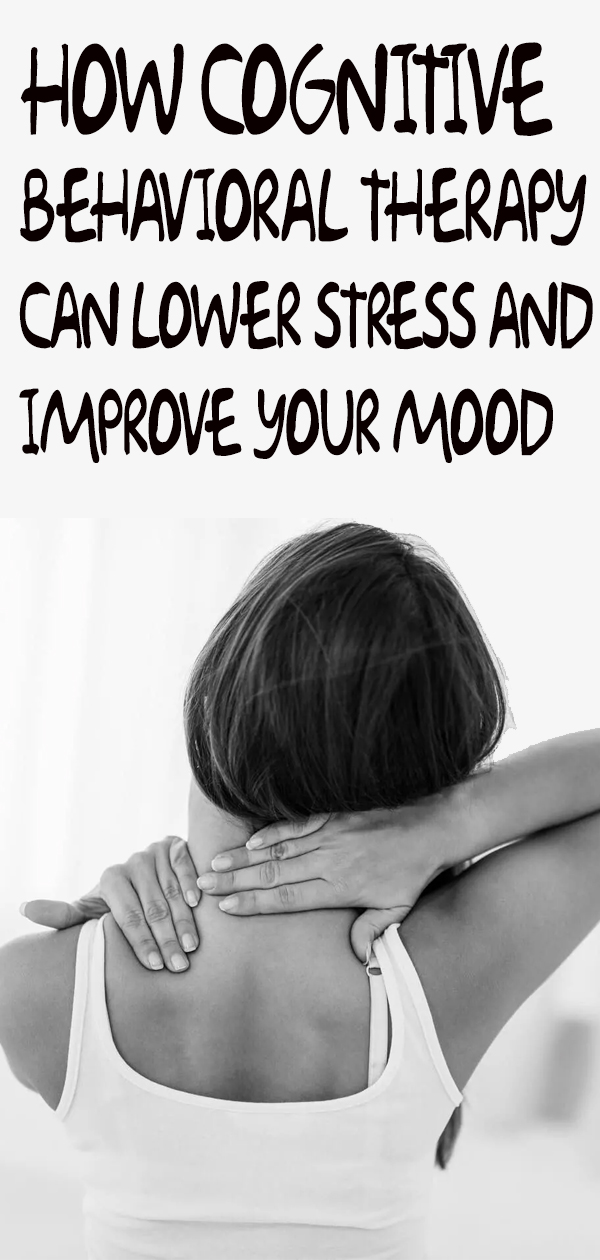Cognitive-behavioral therapy (CBT) is a technique that psychologists use to help change your mood and reduce stress. Furthermore, the technique helps people recover from depression and anxiety disorders.
Cognitive-behavioral therapy is not new. However, the information about this treatment continuously grows. And, the uses for the treatment have increased since its development in the 1980s. Before CBT, treatments focused either on thoughts or the cognitive processes of the mind. Plus, behavioral therapy focused on changing the behavior of the individual.
Here’S How Cognitive Behavioral Therapy Can Change Your Mood And Reduce Stress
One research team says ‘CBT works by changing people’s attitudes and their behavior by focusing on the thoughts, images, beliefs, and attitudes that are held (a person’s cognitive processes) and how these processes relate to the way a person behaves, as a way of dealing with emotional problems.’
CBT combines thoughts, behavior, and emotions or feelings into a single therapy. It helps individuals to reframe thoughts about emotional states and influence behavior as a result of mindset changes.
The Mind-Body Connection And Cognitive-Behavioral Therapy
When researchers looked at using cognitive behavioral therapy (CBT) to treat physical pain in the body, they found the technique useful in connection with meditation and light exercise or movement therapy. This use is unique. That’s because most therapy techniques focus on the mind only. Indeed, they fail to see that by changing the mind, we can improve our experience of pain in the body.
A research team at the University of Maryland School of Medicine in Baltimore, Maryland, found ‘a mind-body approach (cognitive-behavioral therapy) successful in treating chronic back pain patients. They determined it improved function, decreased perceived pain, and improved mood state for fibromyalgia patients.
The results were surprising, and they show that CBT can help patients to think differently about their physical pain, which leads to less reported pain at the end of the treatment.
Research Review Of Cognitive-Behavioral Therapy For Mood And Stress Disorders
Researchers at the University of Pennsylvania, the Beck Institute for Cognitive Therapy and Research, the Medical University of South Carolina, and Drexel University looked at 325 studies on the effectiveness of cognitive-behavioral therapy (CBT) and reviewed the results. They found that CBT was better than antidepressant pharmaceutical drug treatment for depression in adult patients seeking treatment for their depression.
They also found that CBT as therapy was equally effective as behavioral therapy alone in the treatment of adult depression and obsessive-compulsive disorder. The researchers concluded that CBT is useful for many ailments.
“We also aimed to provide answers regarding the degree to which the effects of CT persist following the termination of treatment. The meta-analyses reviewed strongly suggest that across many disorders, the effects of CT are maintained for substantial periods beyond the cessation of treatment. More specifically, significant evidence for long-term effectiveness was found for depression, generalized anxiety, panic, social phobia, OCD, sexual offending, schizophrenia, and childhood internalizing disorders.”
In the cases of depression and panic, there appears to be a robust and convergent meta-analytic. Indeed, evidence suggests that CT produces vastly superior long-term persistence of effects. Moreover, patients experience relapse rates half those of pharmacotherapy. Besides, CT appears to show more significant long-term effects in the treatment of generalized anxiety disorder as compared to applied relaxation.
In the review of the research, CBT has also been used in the treatment of substance abuse, anger, marital problems, schizophrenia, post-traumatic stress disorder (PTSD), social phobia, panic disorder, generalized anxiety disorder, bipolar disorder, personality disorders, and anorexia nervosa.
Cognitive-behavioral therapy may be as effective as drug therapies for these psychological disorders as well, but this study did not evaluate treatment for these conditions.
How Cognitive Behavior Therapy Works To Change Your Mood
We sometimes think false, distorted, or negative ideas about ourselves. However, CBT first helps us to identify these incorrect thoughts.
For example, imagine that you accidentally spilled your coffee this morning. You immediately thought, ‘There I go again, being clumsy.’
This negative thought about yourself can put you in a bad mood. If you choose to believe that you are clumsy, you may be more likely to do it again. The first step of CBT is to identify these incorrect statements and thoughts in your mind.
The second step is to question the thoughts.
With CBT, you learn to stop the poor thinking.
Instead, you might say ‘Why do I believe that I am clumsy?’ or ‘Haven’t I had more days of not spilling my coffee than days that I did spill it?’
The third step is replacing negative thoughts with a positive one.
For example, you might say ‘Even though I spilled my coffee, it was just an accident. I am normally very careful’ or ‘That was a one-time mistake that is not likely to happen again.’
Give yourself some positive self-talk and reject the negative.


